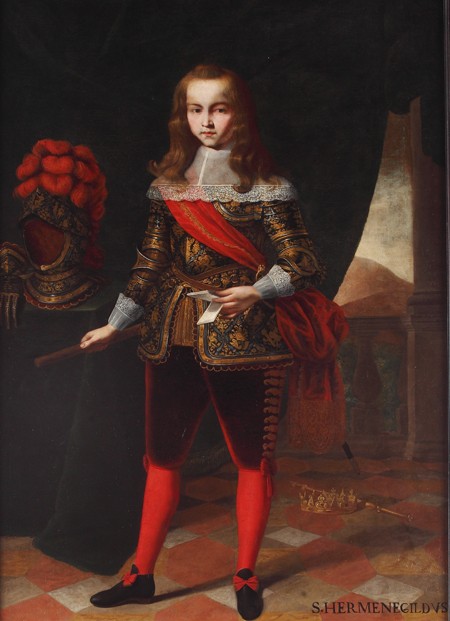Typical of seventeenth-century Habsburg court portraits is a painting of a well-groomed, self-assured young aristocrat believed to be Juan José de Austria, an illegitimate son of Spanish king Philip IV. In the painting’s lower right corner is a thread of blocky letters that reads “S. Hermenegildus.” This line of text identifies the sitter as Saint Hermenegild, a sixth-century Iberian prince, and at the same time complicates the painting’s seemingly straightforward visual message. Scholars disagree as to whether the text was added to the portrait at a later date or the painting was commissioned as a
My time at CASVA has thus far been devoted to analyzing a mid-seventeenth-century Mexican inquisitorial trial that engages with precisely these issues. The inquisitors were concerned that a number of portraits of Bishop Juan de Palafox y Mendoza depicted the controversial, still-living ecclesiastic as a saint. Some of these had been expressly commissioned to present the bishop as a holy figure, in explicit violation of various ecclesiastical decrees. Others had been repainted by their owners, who added angelic wings to finished works.
It was the multiplicity of ways in which Palafox’s portraits could be seen that especially concerned the inquisitors—after all, official images were supposed to adhere to a predetermined type. The inquisitors’ focus on the portraits’ sliding signification reveals
The desire to sanctify Palafox’s portraits, that is, to change the type of image they were and the category of individual they depicted, did not arise ex nihilo. Rather, I contend that their treatment emulated a number of other types of official images and accepted pictorial practices that united portraiture and devotional imagery. These included paintings of saints that emulated the “look” of portraits; portraits whose sitters had been forgotten and that were recycled as devotional pictures as a matter of expediency; and a lo
This, and other episodes like it, were not without their consequences. From the early seventeenth century the anxiety surrounding difficult-to-categorize images and their potential misreadings motivated artists such as Diego Velázquez and theorists such as Bernardino de Villegas, both associated with the court in Madrid, to begin to define the boundaries of artistic genres and types. Their efforts suggest that official imagery could be misconstrued just as easily in the metropole as in the colonial “periphery,” which calls for a wide-reaching comparative study of images and documents from across the Hispanic monarchy.
